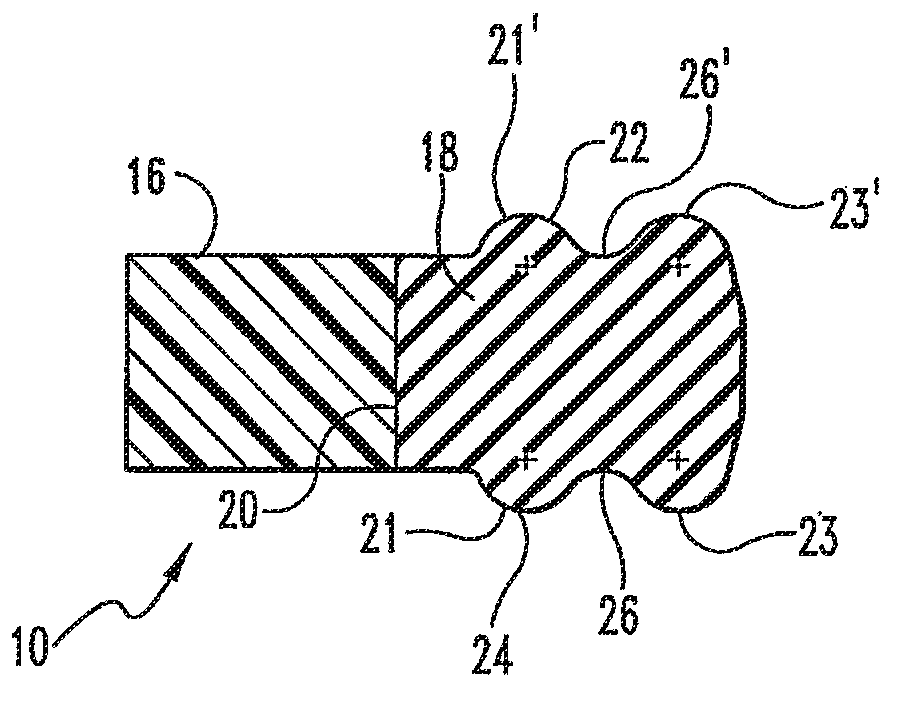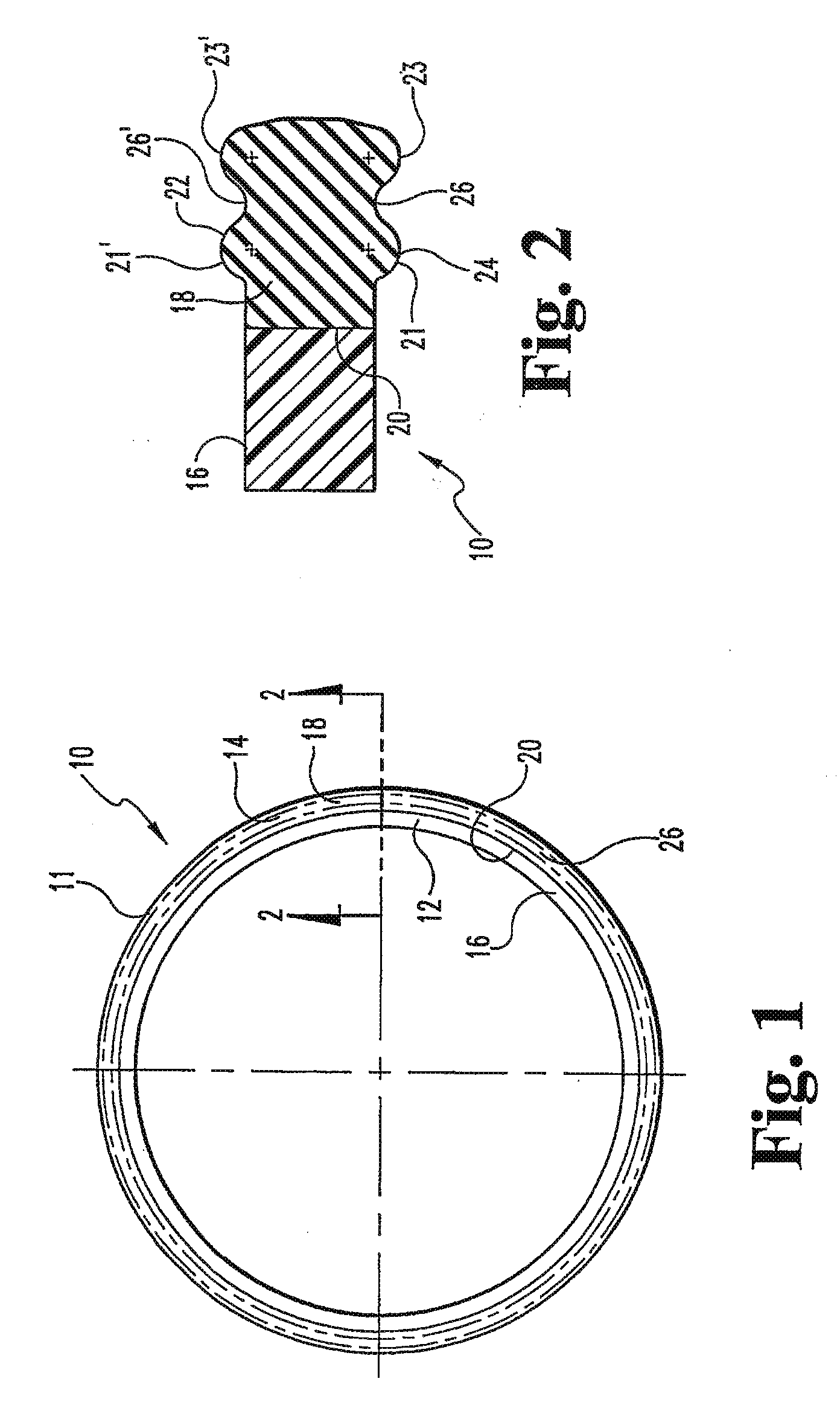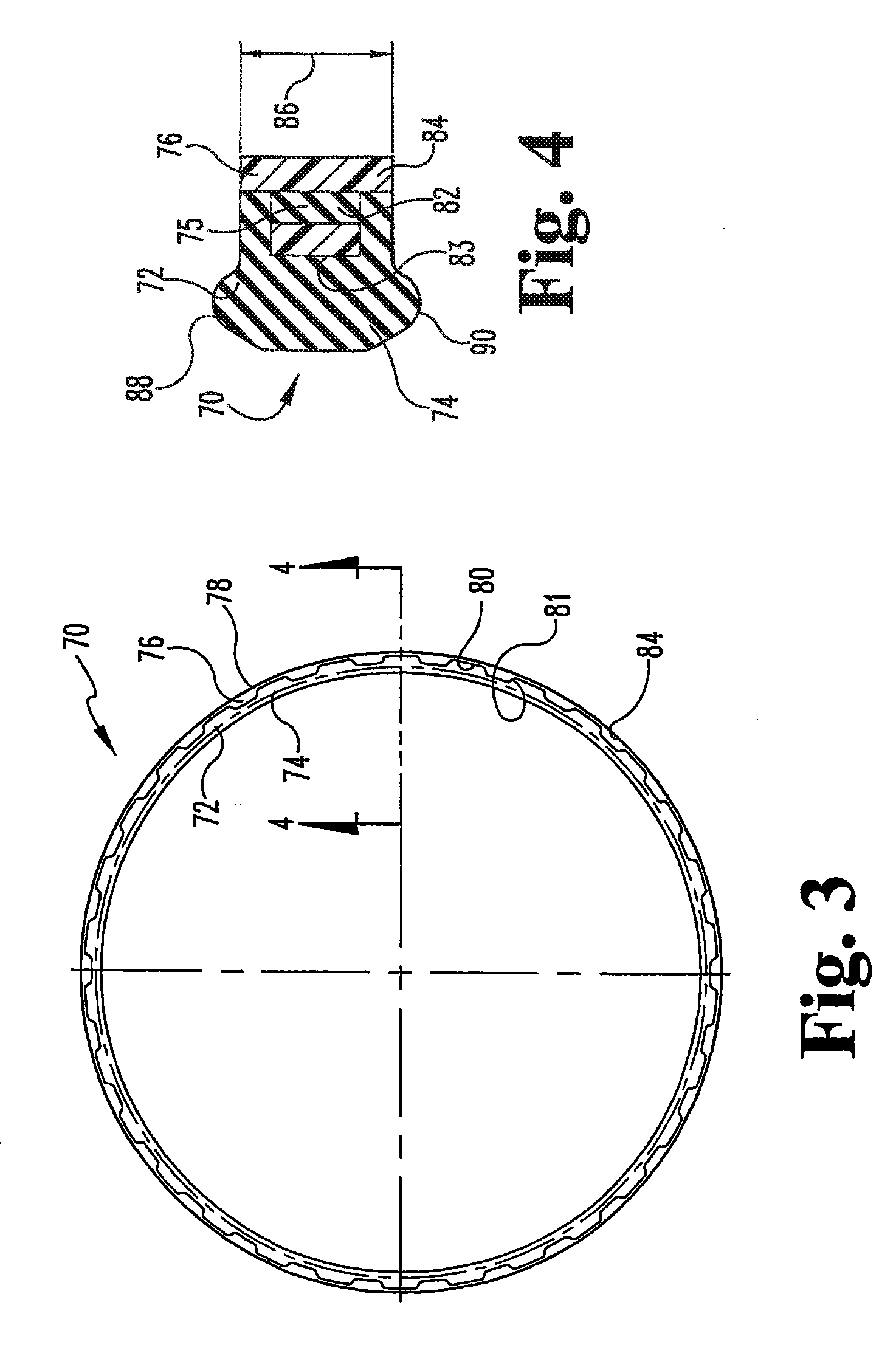Composite fuel permeation barrier seal
a fuel permeation barrier and composite technology, applied in the direction of engine seals, mechanical equipment, engine components, etc., can solve the problems of suspected permeation of fuel through certain seals/gaskets, measurably affecting the environment, etc., to reduce the emission of volatile organic compounds (vocs), reduce the deformation of the seal assembly, and minimize the effect of vapor and liquid passag
- Summary
- Abstract
- Description
- Claims
- Application Information
AI Technical Summary
Benefits of technology
Problems solved by technology
Method used
Image
Examples
Embodiment Construction
[0025]For the purposes of promoting and understanding the principles of the invention, reference will now be made to the embodiments illustrated herein, and specific language will be used to describe the same. It will nevertheless be understood that no limitation of the scope of the invention is thereby intended. Any alterations and further modifications in the described seals assemblies, devices, and / or methods, and any further applications of the principles of the invention as described herein, are contemplated as would normally occur to one skilled in the art to which the invention relates.
[0026]In general, the present invention provides a seal assembly that includes at least two barriers or sealing portions. The two sealing portions are connected together to form a composite seal or seal assembly. One or both of the sealing portions bear against the opposing sealing members of containment or delivery system components. In preferred embodiments, the first sealing portion can inhi...
PUM
 Login to View More
Login to View More Abstract
Description
Claims
Application Information
 Login to View More
Login to View More - R&D
- Intellectual Property
- Life Sciences
- Materials
- Tech Scout
- Unparalleled Data Quality
- Higher Quality Content
- 60% Fewer Hallucinations
Browse by: Latest US Patents, China's latest patents, Technical Efficacy Thesaurus, Application Domain, Technology Topic, Popular Technical Reports.
© 2025 PatSnap. All rights reserved.Legal|Privacy policy|Modern Slavery Act Transparency Statement|Sitemap|About US| Contact US: help@patsnap.com



